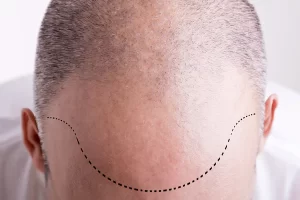Hairline design is one of the most critical steps in achieving a successful hair transplant. The hairline is the first thing people notice, and it plays a crucial role in creating a natural and aesthetically pleasing appearance. A well-designed hairline not only restores lost hair but also boosts confidence and complements the individual’s facial features. In this article, we will explore the importance of hairline design in hair transplants, the factors that influence it, and how to ensure you achieve the best hairline for your needs.
What Is Hairline Design?
Hairline design refers to the process of carefully planning and creating the front hairline during a hair transplant procedure. The goal is to create a hairline that looks completely natural and complements the patient’s face. The design process is highly personalized, taking into account factors such as age, facial structure, hair density, and future hair loss patterns. This ensures that the hairline will continue to look natural as the patient ages.

The Importance of a Natural Hairline
A hair transplant is only as good as its hairline. A poorly designed hairline can result in an unnatural, artificial look, defeating the purpose of the transplant. The key is to mimic the natural progression of hair, considering where the hairline should start and how it should frame the face. Hairline design involves a balance between art and science, requiring the skill and experience of a trained surgeon. For those seeking a hair transplant in Istanbul, it is essential to choose a clinic with a proven track record in designing natural-looking hairlines.
Factors to Consider in Hairline Design
Several factors must be considered to achieve a successful hairline design:
- Age: A younger patient may want a lower hairline, but this may not be suitable for someone older. As people age, their hairline naturally recedes. Therefore, a mature hairline design takes into account the patient’s age and the likelihood of future hair loss.
- Facial Shape: The hairline should complement the patient’s facial structure. For example, a round face may benefit from a slightly more rounded hairline, while a more angular face might require a different approach.
- Hair Density: The density of the hair in the donor area will determine how dense the hairline can be. A thick hairline can provide a more youthful appearance, but the distribution of hair grafts must be done carefully to avoid thinning in other areas.
- Future Hair Loss: Hairline design also needs to consider future hair loss. The surgeon must leave enough donor hair for potential future procedures, ensuring that the hairline remains natural over time.
Creating a Customized Hairline
Each patient’s hairline is unique, which is why hairline design is such a crucial aspect of hair transplant surgery. During the consultation, the surgeon will assess the patient’s hair loss pattern, donor area, and facial features. Using these insights, they will draw a proposed hairline on the patient’s scalp. The patient’s input is also essential at this stage, as they should feel comfortable with the design. A successful hair transplant in Turkey often starts with a well-planned and realistic hairline design.
Techniques for Achieving a Natural Hairline
There are several techniques that hair transplant specialists use to achieve a natural-looking hairline. These include:
- Micro and Mini Grafts: The use of micro-grafts (1-2 hairs) and mini-grafts (3-4 hairs) allows the surgeon to create a more natural appearance, with thinner hair at the front and thicker hair further back.
- Irregularity: A straight hairline looks unnatural. Surgeons use an irregular pattern to mimic the way natural hair grows, avoiding a harsh, artificial line.
- Angle and Direction: The direction in which the hair is implanted is also vital. The surgeon will angle the hair to follow the natural flow, ensuring the new hairline blends seamlessly with the existing hair.
Why Choose a Hair Transplant in Istanbul?
Istanbul has become a hub for hair transplants, attracting patients from all over the world due to its highly skilled surgeons and state-of-the-art facilities. A hair transplant in Turkey offers not only affordability but also expertise, especially when it comes to hairline design. Clinics in Istanbul are known for their artistry in creating natural-looking hairlines that age well and complement the patient’s appearance. At Hairneva, Assoc. Prof. Dr. Güncel Öztürk personally oversees hairline design, ensuring that each patient receives a customized, natural-looking hairline that enhances their overall facial aesthetics. His meticulous attention to detail and expertise in aesthetic surgery make Hairneva a top choice for those seeking the best results.
Conclusion
Hairline design is a vital element of a successful hair transplant. It requires a detailed understanding of the patient’s facial structure, hair loss pattern, and personal preferences. When done correctly, it can restore not only hair but also confidence. Whether you’re considering a hair transplant in Turkey or elsewhere, make sure to choose a clinic with expertise in hairline design. This will ensure that your new hairline looks natural, suits your face, and stands the test of time.


